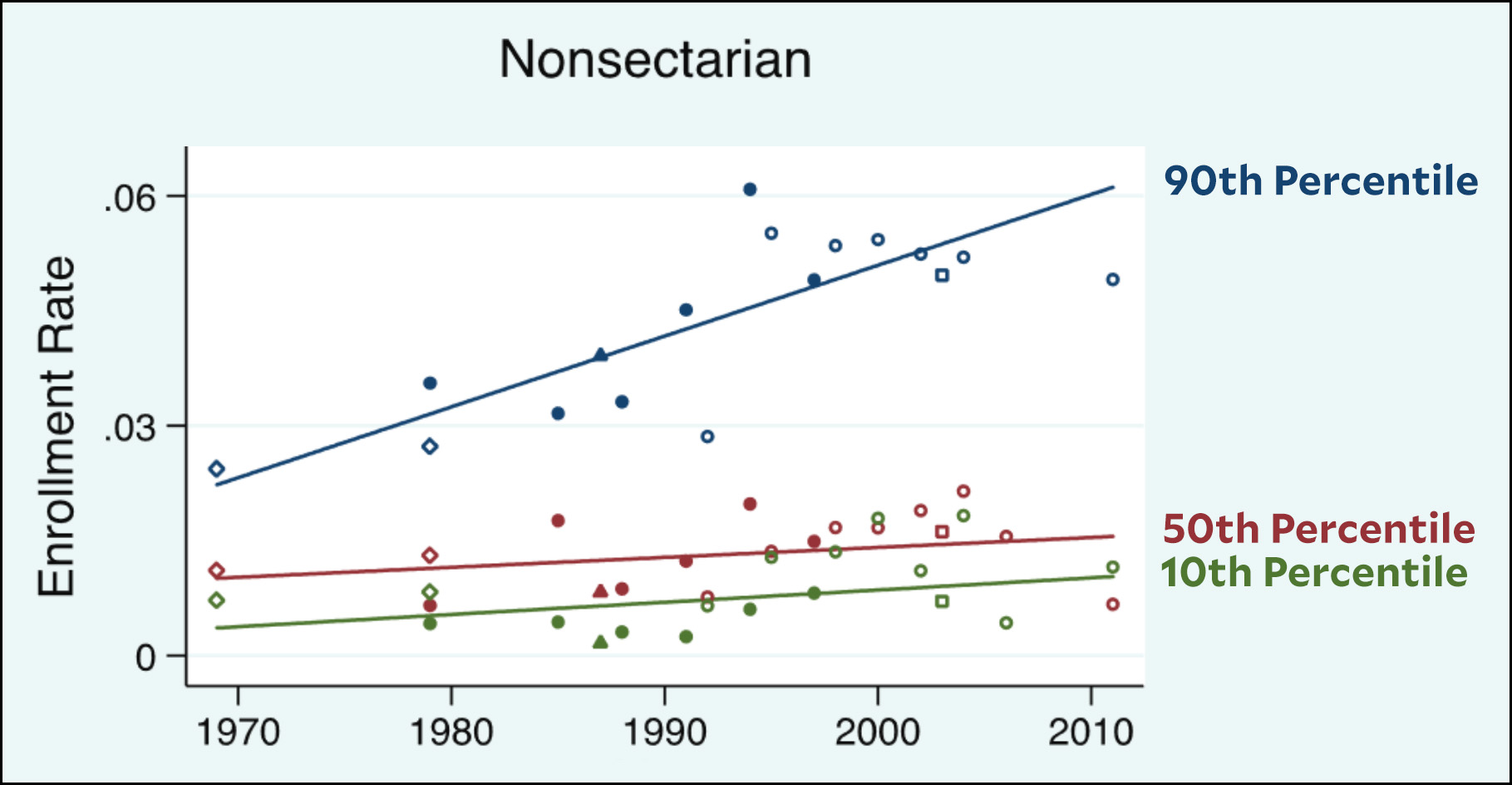You’ll often read or hear that American schools are more segregated today than they were 50 or 60 years ago. The technical measure used to demonstrate this is usually something like the number of schools in which non-white students make up, say, 90 percent or more of the total enrollment. But why has this increased? Bob Somerby provides part of the answer:
Why are so many more schools now so heavily non-white? There are several parts to the answer, but the answer must start with this….White kids were 68.8% of the student population in 1988. That number had dropped to 48.4% by 2016….To add more meat to the bones of a partial explanation, consider the recent demographics of the Detroit Public Schools, according to Stanford’s Sean Reardon….White kids: 3 percent.
And Jon Chait provides another part:
The deep cause of segregation is residential living patterns driven by decades of racist housing policy. Neighborhood schools reflect those patterns of racial segregation.
Both of these explanations have some truth to them, but I think they miss the biggest part of what happened. The real root of the answer can be found in a simple chart. I’m using the Los Angeles Unified School District as an example, but it’s pretty representative of what happened all over the country:

An overall drop in the share of white kids from 68 percent to 48 percent can’t explain an 80 percent drop in the number of white kids in the LAUSD. Nor can housing policy, which has gotten less racist over the past 50 years.
And it wasn’t just Los Angeles, of course. The same thing happened in city after city: steady white flight to the suburbs during the 50s and 60s, followed by a short but more panicked white flight during the busing era. By the time it was all over, (a) the white population of big cities had dropped dramatically and (b) the white population of big city public schools had dropped even more dramatically. At the same time, enrollment in non-religious private schools doubled among high-income families:

Exact figures are slippery, but if you put all this together, along with some other data, it suggests that in Los Angeles virtually all affluent whites have either moved out of the LAUSD or else decamped to private schools. The small number of whites still left are almost exclusively working and middle class. Much the same thing has happened in other big cities.
I don’t mean to pick on anyone here. I just want to make it clear that what happened wasn’t really due to cold-blooded forces of either demographics or housing policy. Rather, it was due to the very deliberate, very conscious choice of whites to abandon big city school districts when they became too black and too Hispanic. The middle class did it mostly by moving away, while the affluent did it by moving their kids into private schools.
A lot of things in American life are driven by institutional racism, but this isn’t one of them. This was driven by racism that’s as hot-blooded and as individual as you can get. Over the course of 30 years, millions of whites all over the country made a personal decision that they didn’t want their kids in the same schools as blacks and Hispanics. That’s why big city school districts today are more segregated than they were half a century ago.


















